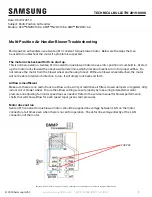
CAIR
plus
Commissioning and Maintenance
PR-2009-0096-GB • Subject to modifications • R8-10/2015
77
•
If energy recovery is done with a bypass arrangement, check dampers for correct
operation (refer to „Maintenance of dampers blades and shut-off dampers“ on
page 80).
•
Check bypass damper for proper operation, if required.
8.11.2 Maintenance of plate-type heat exchanger
DANGER!
•
Please consider the
safety instructions
on page 5 and page 55ff when performing
all the described activities
!
A plate-type heat exchanger operates without any external, mechanical or electrical
actuators, is not equiped with any moving components and its service life can be neg-
atively influenced only by corrosion.
Carry out the following maintenance steps:
•
Clean as needed according to degree of plate assembly contamination.Use a hair
broom to remove dry dust and fibers at the coil inlet, blow out.
•
Check bypass damper for proper operation, if required.
•
Complete wet cleaning only if a tray is installed and available!
Oil and grease (kitchen ex-
haust)
•
Remove oil and grease deposits with hot water and grease-dissolving cleaning
agents.
8.11.3 Airflow routing in plate-type heat exchangers
ATTENTION
Risk of damage to the unit!
•
Avoid inadmissible high differential pressures between supply air and
extract air.
This could cause damage to the fins.
In this case, DencoHappel neither accepts warranty claims nor assumes liability.
cold corner
1 = heat-dissipating
Condensate
2 = heat-absorbing
Condensate is attracted to the
cold zone
by gravity and air-
flow. If a lot of condensate pre-
cipitates, the risk of freezing
decreases. If little condensate
precipitates, the risk of freez-
ing increases.
Condensate is attracted to the
cold zone
by gravity and air-
flow. If a lot of condensate pre-
cipitates, the risk of freezing
decreases. If little condensate
precipitates, the risk of freez-
ing increases.
Condensate is attracted to the
warm zone
by gravity and air-
flow. The risk of freezing
decreases.
Condensate is attracted to the
warm zone
by gravity and air-
flow. The risk of freezing
decreases.
Tab. 8-3:
Airflow routing in plate-type heat exchangers






























